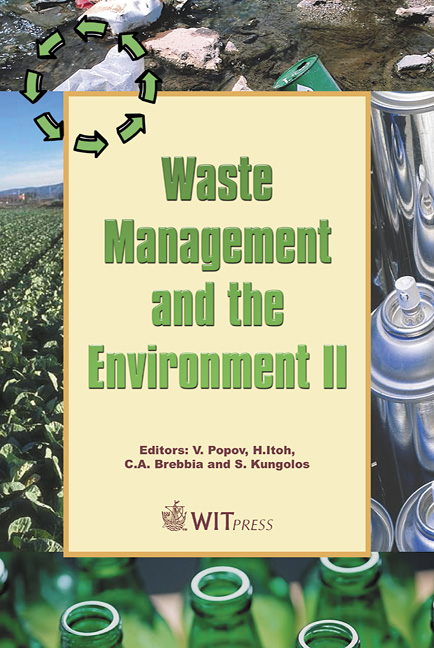Efficiency Of Sewage Sludge Endocrine Active Compounds Treatment Technologies At Eliminating
Price
Free (open access)
Transaction
Volume
78
Pages
10
Published
2004
Size
266 kb
Paper DOI
10.2495/WM040621
Copyright
WIT Press
Author(s)
M. Gehring, D. Vogel, L. Tennhardt, D. Weltin & B. Bilitewski
Abstract
Efficiency of sewage sludge treatment technologies at eliminating endocrine active compounds M. Gehring, D. Vogel, L. Tennhardt, D. Weltin & B. Bilitewski Department of Waste Management, Dresden University of Technology, Germany Abstract Hormonal disturbances caused by environmental pollutants have become one of the most important issues regarding environmental and human health. In order to investigate the efficiency of sewage sludge treatment technologies to eliminate endocrine active compounds (EACs) samplings have been carried out at 13 municipal sewage treatment plants (STPs) and one co-fermentation facility in Germany. Laboratory experiments have been conducted simulating anaerobicmesophilic, aerobic-psychrophilic, aerobic-thermophilic and simultaneousaerobic sludge treatments. Major estrogenic compounds have been studied, i.e. octylphenol, nonylphenol, bisphenol A, estradiol, estrone, estriol, mestranol and ethinylestradiol. Concentrations of EACs in STP effluents must be assessed as to whether they are capable of affecting sensitive aquatic ecosystems. Advanced sewage treatment, i.e. by means of ozonation, is required. Urine and wastewater highly contaminated with EACs should be treated separately. Aerobicpsychrophilic treatment was most effective in eliminating EACs from sludge. Anaerobic-mesophilic sludge treatment in contrast caused the formation and accumulation of EACs. The use of anaerobically digested sludge as a fertiliser is therefore not generally advisable. On the other hand, reuse of sludge is desirable because of its high content of phosphorus and micro-nutrients. So, threshold values for EAC concentrations in sludge for agricultural use should be established. Sludge significantly contaminated with EACs should be incinerated. With regard to sustainability, production and use of EACs should be successively reduced. Keywords: wastewater, sewage sludge treatment, endocrine active compounds, estrogens, bisphenol A, steroids, alkylphenols, alkylphenol ethoxylates, cofermentation, biowaste.
Keywords
wastewater, sewage sludge treatment, endocrine active compounds, estrogens, bisphenol A, steroids, alkylphenols, alkylphenol ethoxylates, cofermentation, biowaste.





